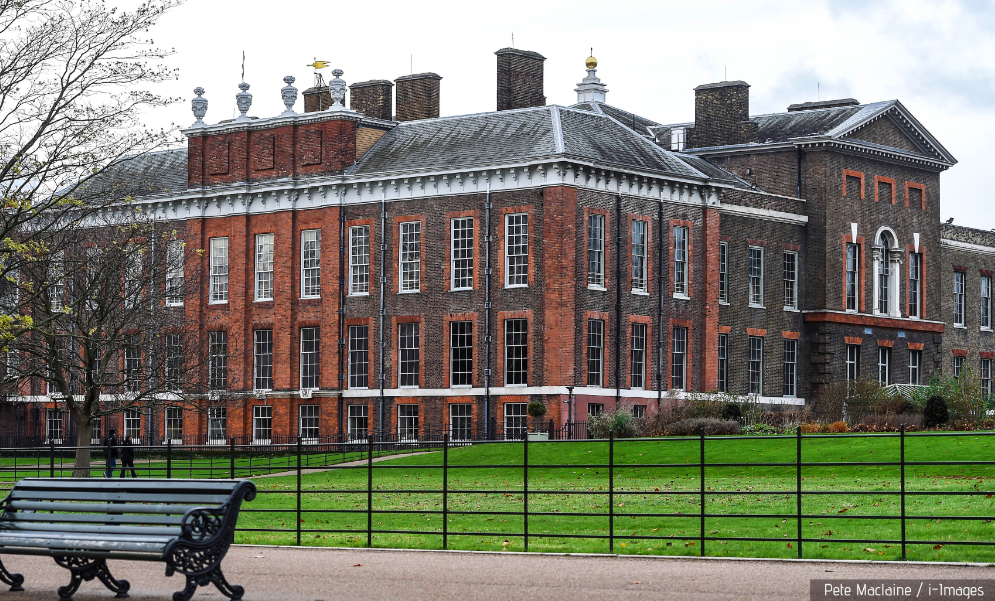
It is one of London’s most popular tourist attractions and a symbol of modern members of the Royal Family, Kensington Palace.
It is a royal residence with a history dating back to the 17th century; it is what it is today after King William III and Queen Mary II bought the property, then known as Nottingham House, in the summer of 1689.
For £20,000, William and Mary bought the property from the Secretary of State Daniel Finch, 2nd Earl of Nottingham. Immediately, they called for an expansion. To save time and money, they kept the original structure but added a three-story pavilion at each of the four corners. This allowed for more accommodation for the King and Queen and their attendants.
The royal court took residence in the palace shortly before Christmas 1689. For the next 70 years, Kensington became a favoured residence of British monarchs. However, the official seat of the court was and is still at St James’s Palace, which has not been an actual royal residence in London since the 17th century. After a fire in 1691, the King’s staircase was rebuilt in marble, and a Guard Chamber was constructed.
Mary also died there of smallpox in 1694. William later died after a battle with pneumonia in 1702.
After William III’s death, Queen Anne took residence and finished the extensions William and Mary had begun. Her most notable contribution to the palace was the gardens. She commissioned the Hawksmoor-designed Orangery that was built for her in 1704. The interior decoration was made to be a greenhouse and an entertaining space.
The palace was the setting of the final argument between Sarah, Duchess of Marlborough, and Queen Anne. The Duchess was known for being outspoken and manipulative and was jealous of the attention the Queen gave to Abigail Masham, Baroness Masham. Their friendship came to an abrupt end in 1710. Queen Anne died at the palace on 1 August 1714.
George I spent lavishly on new royal apartments and created three new state rooms: the Privy Chamber, the Cupola Room, and the Withdrawing Room. The last reigning monarch to use Kensington Palace was George II. He did not make any major structural changes during his reign and left the running of it to his wife, Queen Caroline. At her request, Charles Bridgeman, successor to royal gardener Henry Wise, redesigned Kensington Gardens into the form that is still recognisable today. This includes The Serpentine, the basin called the Round Pond, and Broad Walk.
[getty src=”78952867″ width=”594″ height=”333″ tld=”com”]With the accession of King George III, the palace was used for minor royalty. In 1837, Princess Alexandrina Victoria was awakened to be told her uncle, King William IV, had died, and she was queen. She took on the regnal name of Victoria and held her first privy council in the palace’s Red Saloon. During World War I, George V allocated several rooms for those working for Irish POWs and Irish soldiers.
During the Blitz in 1940, the palace was severely damaged. An incendiary bomb exploded on the north side of Clock Court and damaged many of the surrounding buildings, including the Queen’s Apartments and the State Apartments. Repairs would not be completed for several years. After the war, Prince Philip stayed with his grandmother there in the lead-up to his 1947 marriage to Princess Elizabeth, who, just five years later, would become Queen Elizabeth II.
[getty src=”1633147424″ width=”594″ height=”417″ tld=”com”]Princess Margaret, Countess of Snowdon (the sister of Queen Elizabeth II), lived in Apartment 10 following her 6 May 1960 wedding to the Earl of Snowdon. They went about transforming the much larger Apartment 1A to new designs. In 1960, Kensington Palace was under the auspices of the Department of the Environment, meaning the renovation had an extremely strict budget. The eventual costs would come out to £85,000.
[getty src=”52101888″ width=”594″ height=”395″ tld=”com”]In 1981, the part of the palace King George I built for his mistress, the Duchess of Kendal, Apartments 8 and 9 were combined to create the London residence for the newly married Prince of Wales and his wife, Diana. Princes William and Harry spent their childhood there and went to local nursery and pre-preparatory schools in Notting Hill. This remained Diana’s official residence after their divorce and until her 1997 death. Following her death, more than one million bouquets were put out in her honour and reached 1.5 metres in some places. Her residence remained vacant for ten years and was split back into two apartments. One was used by four of Prince Charles’ charities, and Apartment 9 became home to the Chief of Defence Staff.
[getty src=”523272590″ width=”594″ height=”394″ tld=”com”]Following their marriage in 2011, the then-Duke and Duchess of Cambridge used Nottingham Cottage on the grounds as their primary London residence. In 2013, they moved into the four-storey, 20-room Apartment 1A that was formerly lived in by Princess Margaret. Renovations took 18 months at a cost of £4.5 million to add new heating, plastering, electrics, and asbestos removal. A new roof was also added during this time. Kensington Palace became their main residence in 2017 after moving from their country home of Anmer Hall. Diana’s former residence, Apartment 8, was turned into office space for the couple’s staff, charity work, and official duties.
On 28 March 2012, it was announced Prince Harry had moved his Clarence House residence to a one-bedroom apartment at Kensington. From 2013, he lived in Nottingham Cottage. This is where he lived with his wife, Meghan, the Duchess of Sussex, until the birth of their son in the spring of 2019. Other royals who have lived at the residence in recent years include Princess Eugenie and her husband, Jack Brooksbank.
Today, the palace is open to the public all year round. There are also multiple opportunities to stroll Kensington Gardens and the famed Sunken Garden.

